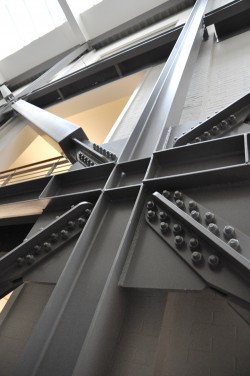Last week, the Vanguard reported on the potential for a major earthquake in the Pacific Northwest [“Megathrust earthquakes in the Pacific Northwest,” Feb. 9]. Portland State geology professor Dr. Scott Burns said that sometime in the next 50 years there is a 15 percent chance of a catastrophic earthquake with a magnitude of 9 or greater and a 37 percent chance of an earthquake with a magnitude of 8 or greater.

Living in a region that is likely to experience a major earthquake at any time poses many challenges for large institutions like PSU. Unlike other seismically active areas such as Chile or California, the Pacific Northwest was not considered to be at risk until the 1980s. For that reason, Oregon did not have stringent seismic building codes until the mid-’90s.
A number of buildings in Oregon need to be retrofitted, said Richard Rogers, structural program chief for Oregon Building Codes Division. “We’re scrambling to catch up,” he said. Rogers explained that current codes are generally engineered to protect life safety—they are engineered to stay standing during the event and until everyone gets out safely. Beyond that, the building may or may not sustain major damage.
According to Rogers, anything built in the last 10–20 years has a better chance of being safe during an earthquake.
Monica Rimai, vice president of Finance and Administration, heads up the university’s emergency management team. She explained that the university has recently performed extensive seismic upgrades on Science Building 2, Lincoln Hall, Shattuck Hall, Montgomery Court, Ondine Hall and Smith Memorial Student Union. Rimai stated that the university has requested money from legislature to upgrade Neuberger Hall, but funds were not allotted for the upgrade in the current biennium.
Rimai also added that buildings must be built in accordance with codes at the time of their design. Seismic upgrades are voluntary unless the building’s use and occupancy dramatically changes.
“The frustrating thing is that there is just not enough money to do what we would like to do. The good news is that on this campus, from the president down to the electricians, everybody gets that life safety is the most important thing, and that’s our commitment—that is our responsibility to our students, the faculty and staff. I take great pride in that being my responsibility,” Rimai said.
Following the events of 9/11, then-President George W. Bush issued Homeland Security Presidential Directive 5, which instructed the Department of Homeland Security to implement and manage the National Incident Management System. NIMS went into effect in 2004 and mandated that all federal agencies and departments, and state, local and tribal organizations adopt the unified system. This includes state institutions like PSU.
According to the DHS website, “This management system is designed to cover the prevention, preparation, response, and recovery from terrorist attacks, major disasters, and other emergencies.”
Rimai, who came to PSU in August 2011, has extensive training and previous experience working with this system; she served as a former assistant U.S. attorney and as an emergency management specialist at other large universities. Her team includes heads from the Department of Communication, the Office of Information Technology, the Business Affairs Office, Auxiliary Services, the Campus Public Safety Office and Facilities and Planning.
Optimistic that the university is on track toward being able to handle a major event like an earthquake, Rimai also admits that there is more work to be done: “My next most doable priority is to get information out in a way that is accessible to everybody, and I wouldn’t just say earthquake. We need to have information available in lots of different ways about what to do in a catastrophic event.”
Major earthquakes are just one type of catastrophy, but Rimai looks at preparedness and access of emergency management information for all types of catastrophic events. Some information can even apply to other events: “We need to get some definitions out about shelter in place, because shelter in place could be applicable to an earthquake. It could be applicable to violence on campus. There are some standard behavior instructions that we need to have available in every classroom and on the website. That’s really where we need to go with those big catastrophic potential emergencies,” Rimai said.
According to Rimai, residential advisors are asked to explain safety procedures during move-in.
Freshman Kemea Smith lives in the Ondine Residence Hall. When she moved into the dorm, she was provided with details about her room, the furnishings and meal plans. What she was not provided with, however, was any information about fires or earthquakes.
“We never talked about what to do when there is an earthquake. We have a diagram on our doors that shows us where to go in case of a fire drill or real fire, as well as important numbers such as campus safety, but there was no mention of earthquakes,” Smith said.
For more information on earthquake preparedness, visit www.pdx.edu/cpso/earthquake-preparedness-information-0.

